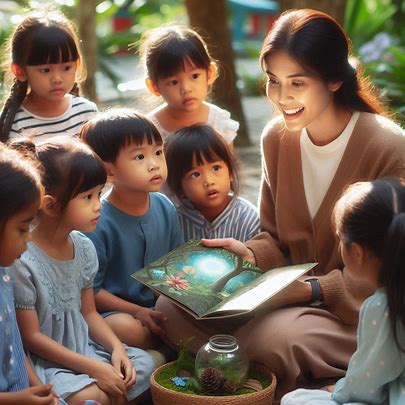Integrating Environmental Themes into Pre-K Literacy Programs

Early childhood education provides the perfect opportunity to instill a sense of environmental awareness in young learners. Introducing environmental themes into Pre-K literacy programs can shape children’s understanding of nature and encourage them to care for their surroundings from a young age. These early lessons can significantly influence how children interact with the world as they age, making integrating such topics essential for their development.
One effective way to incorporate environmental topics into literacy lessons is by using storytelling. Children love hearing stories; including nature-focused characters and settings can enhance their learning experience. Stories about animals, forests, or the seasons not only captivate their imaginations but also promote essential literacy skills. For example, a story about a curious fox exploring the forest can engage children’s phonological awareness, helping them recognize the sounds and patterns in words. This type of learning provides a seamless blend of environmental education and literacy development.
In addition to storytelling, teachers can use the pre-k literacy curriculum to incorporate activities that tie environmental themes with reading and writing. Educators can help children build a strong foundation in language skills while fostering an appreciation for the environment through songs, poems, and rhymes that focus on nature. These activities not only enhance vocabulary but also make learning fun and interactive.
Creative Activities for Early Environmental Education
When designing literacy activities, teachers can integrate simple environmental concepts that are age-appropriate and engaging. For instance, drawing and coloring activities that feature animals and plants can help children practice their fine motor skills while learning about the natural world. Creating nature-themed books where children can draw and write about their favorite outdoor experiences is another way to connect literacy with environmental education. These activities promote creativity, imagination, and early writing skills.
Incorporating environmental themes can also lead to lessons about sustainability. Teachers can introduce concepts such as recycling, saving water, and protecting wildlife through storytelling and hands-on activities. For example, children can create a “recycling bin” craft project or participate in a simple “plant a seed” activity. These experiences teach children the importance of caring for the planet, all while reinforcing literacy skills.
The Benefits of Integrating Nature into Learning
Integrating nature into early learning has many benefits. Children who are exposed to environmental education are more likely to develop a deep respect for nature as they grow older. Additionally, these early lessons help build cognitive skills such as problem-solving, critical thinking, and social-emotional development. Nature-focused literacy activities promote teamwork when children work together on projects, encouraging curiosity and exploration as children ask questions about the world around them.
Furthermore, combining literacy and environmental education fosters a holistic learning environment. Rather than compartmentalizing subjects, teachers can create a cohesive curriculum that merges multiple areas of development. By integrating environmental themes into everyday lessons, educators help children develop a sense of responsibility toward the planet alongside their literacy skills.
Teachers as Environmental Role Models
Teachers play a crucial role in shaping children’s environmental consciousness. When educators model sustainable behaviors in the classroom, they provide a living example of how to care for the environment. Simple actions like using reusable materials, reducing waste, or organizing nature walks can demonstrate the importance of sustainability. By incorporating these habits into daily routines, teachers inspire children to adopt similar behaviors.
Additionally, teachers can encourage children to explore nature outside the classroom. Field trips to local parks or gardens provide real-world learning experiences where children can see the concepts they’ve learned about in action. These outdoor activities also promote physical development and a deeper connection to the environment.
READ ALSO: Beyond Green: Practical Steps for Everyday Environmentalism
Conclusion
Integrating environmental themes into pre-K literacy programs is an effective way to cultivate early awareness and appreciation for nature. By combining literacy development with environmental education, educators can teach children valuable skills while fostering a sense of responsibility toward the planet. Whether through storytelling, creative activities, or outdoor exploration, there are countless ways to blend literacy and environmental education in meaningful ways that will benefit young learners for years to come.
By starting early and using engaging resources like the “Pre K-8 Environmental Education Activity Guide,” teachers can make a lasting impact on children’s development. As they grow, these children will carry with them the lessons of environmental stewardship, helping to build a more sustainable future.

